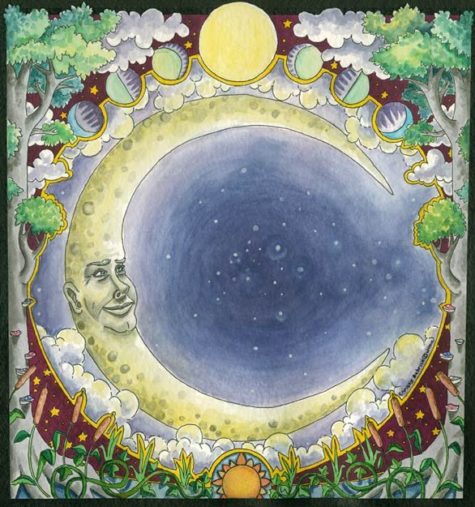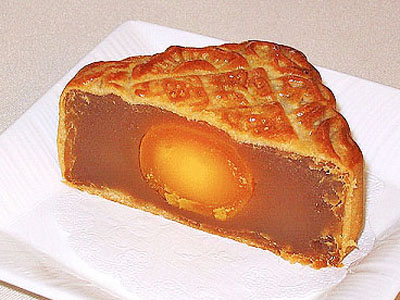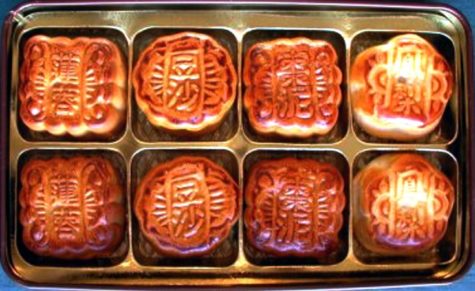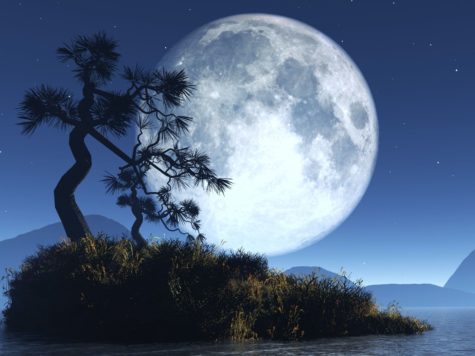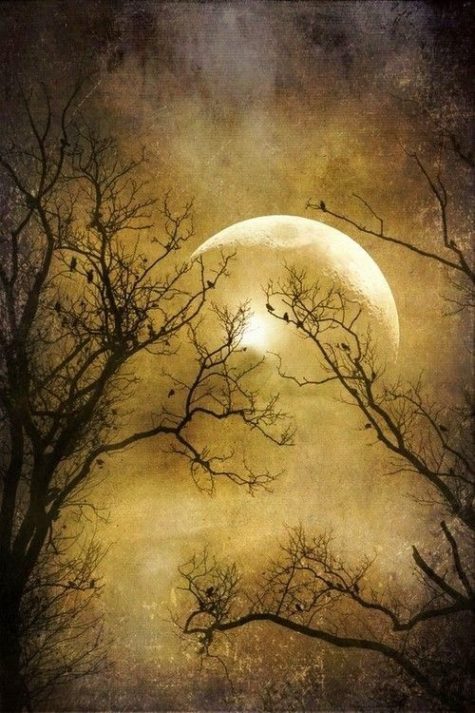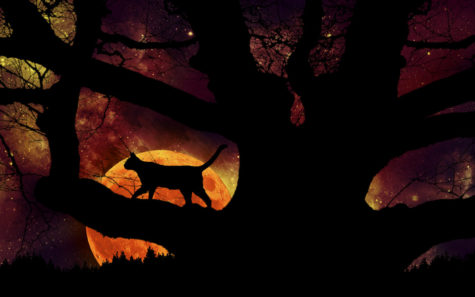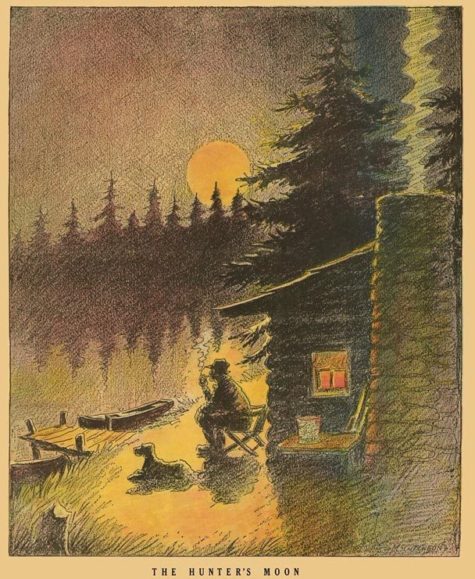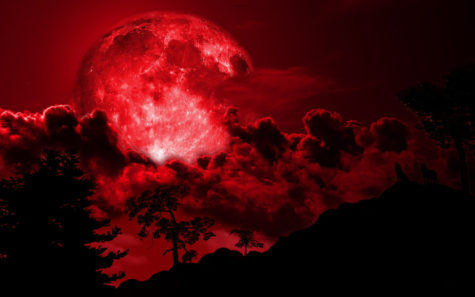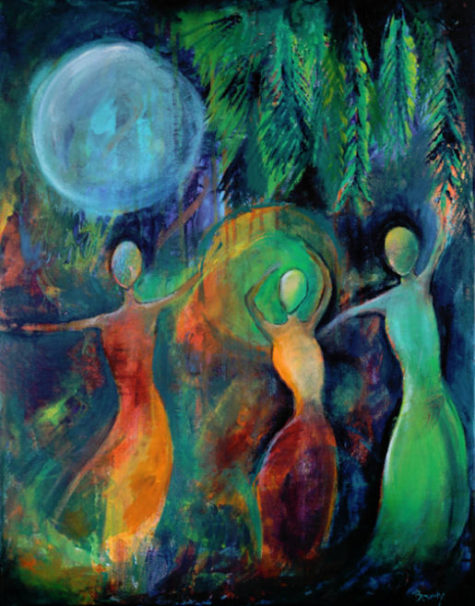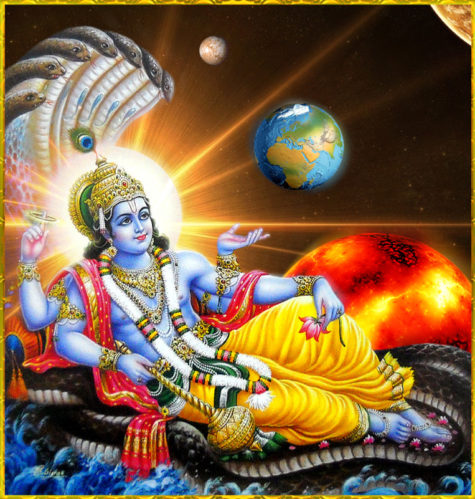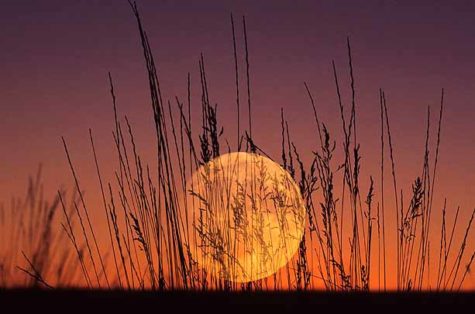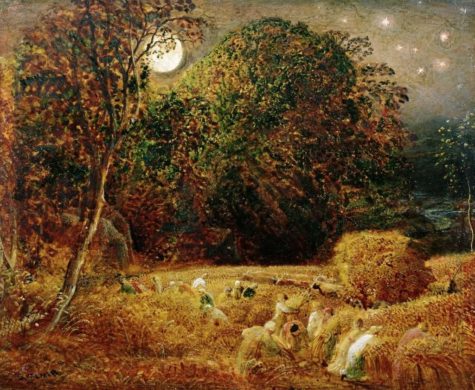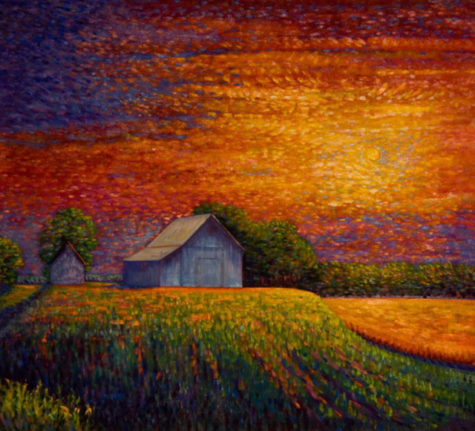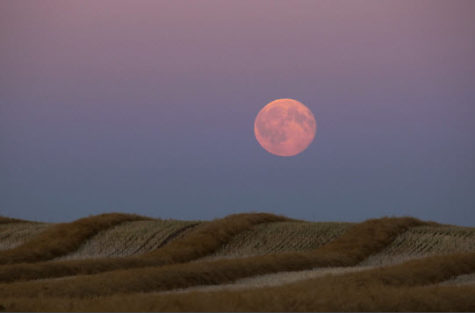Moon
Traditionally, the each of the first ten days after the New Moon has it’s own attributes and qualities. Here’s the folklore on each of those days:
First Day: A good day for new beginnings. To fall ill on this day means the illness might last a long while. A child born at this time will be happy, prosperous, and live long.
Second Day: A good day for buying and selling and for starting a sea voyage. Also a good time for hoeing and sowing.
Third Day: Crimes committed on this day are certain to be found out.
Fourth Day: A good day for building, construction, and home renovations. Also a good day to be born on if you want to enter politics.
Fifth Day: The weather on this day gives an indication of what to expect for the rest of the month. It’s a good day for a woman to conceive.
Sixth Day: The best day for hunting and/or fishing.
Seventh Day: A good day for meeting and falling in love.
Eighth Day: A sickness begun on this day was thought to be likely to cause death.
Ninth Day: If the Moon shines in your face on this day, you may have twisted features or go mad.
Tenth: People born on this day are likely to be travelers or have a restless spirit.
Other Days: A New Moon on a Saturday or Sunday indicates rain, as does seeing the outline of the whole Moon at the same time as a New Moon. Furthermore, should the horns of a New Moon point upwards then the weather will be fair for the next lunar cycle, but if they point down, you can expect rain.
Here is a traditional recipe for the Mid-Autumn Moon Cake
Filling:
- 1 can (17-1/2 ounces) lotus seed paste
- 1/4 cup finely chopped walnuts
Dough:
- 4 cups all-purpose flour
- 1/2-cup non-fat dried milk powder
- 3 teaspoons baking powder
- 1/2 teaspoon salt
- 3 eggs
- 1 cup sugar
- 1/2 cup solid shortening, melted and cooled
- 1 egg yolk , lightly beaten
- Mix lotus seed paste and walnuts together in a bowl; set aside.
Sift flour, milk powder, baking powder, and salt together into a bowl. In large bowl of electric mixer, beat eggs on medium speed until light and lemon colored. Add sugar; beat for 10 minutes or until mixture falls in a thick ribbon. Add melted shortening; mix lightly. With a spatula, fold in flour mixture. Turn dough out on a lightly floured board; knead for 1 minute or until smooth and satiny. Divide dough in half; roll each half into a log. Cut each log into 12 equal pieces.
To shape each moon cake, roll a piece of dough into a ball. Roll out on a lightly floured board to make a 4-inch circle about 1/8-inch thick. Place 1 tablespoon of lotus seed paste mixture in center of dough circle.
Fold in sides of dough to completely enclose filling; press edges to seal. Lightly flour inside of moon cake press with 2-1/2 inch diameter cups. Place moon cake, seam side up, in mold; flatten dough to conform to shape of mold. Bang one end of mold lightly on work surface to dislodge moon cake. Place cake on ungreased baking sheet. Repeat to shape remaining cakes. Brush tops with egg yolk.
Bake in a preheated 375 degree F. oven for 30 minutes or until golden brown. Transfer to a rack and let cool. Makes 2 dozen
Copyright Yan Can Cook, Inc. 1991.
- 1/4 cup sugar
- 2 egg yolks
- 1/2 cup salted butter
- 1 cup all-purpose flour
- 1 cup strawberry (or your favorite) jam
(traditionally red bean paste is used so if you want a more authentic version, you can use a can of red bean paste instead of the jam)
Directions:
- Preheat the oven to 375 degrees.
- Combine the butter, sugar and 1 egg yolk and stir.
- Mix in the flour.
- Form the dough into one large ball and wrap it in plastic wrap.
- Refrigerate dough for half an hour.
- Unwrap the chilled dough and form small balls in the palms of your hand.
- Make a hole with your thumb in the center of each mooncake and fill with about half a teaspoon of jam.
- Brush each cake with the other beaten egg yolk and place on a cookie sheet.
- Bake for about 20 minutes or just until the outside edges are slightly brown
Makes 24
Source: Unknown
The Mid-Autumn Festival, also known as the Moon Festival, is a popular East Asian celebration of abundance and togetherness, dating back over 3,000 years to China’s Zhou Dynasty. In Malaysia and Singapore, it is also sometimes referred to as the Lantern Festival or “Mooncake Festival.”
The Mid-Autumn Festival falls on the 15th day of the 8th lunar month of the Chinese calendar (usually around mid- or late-September in the Gregorian calendar), a date that parallels the Autumn Equinox of the solar calendar. The moon festival is celebrated on the full moon closest to the Autumn Equinox, which sometimes falls in October. This is the ideal time, when the moon is at its fullest and brightest, to celebrate the abundance of the summer’s harvest. The traditional food of this festival is the mooncake, of which there are many different varieties.
The Moon Festival is full of legendary stories. Legend says that Chang Er flew to the moon, where she has lived ever since. You might see her dancing on the moon during the Moon Festival. The Moon Festival is also an occasion for family reunions. When the full moon rises, families get together to watch the full moon, eat moon cakes, and sing moon poems. With the full moon, the legend, the family and the poems, you can’t help thinking that this is really a perfect world. That is why the Chinese are so fond of the Moon Festival.
The Moon Festival is also a romantic one. A perfect night for the festival is if it is a quiet night without a silk of cloud and with a little mild breeze from the sea. Lovers spend such a romatic night together tasting the delicious moon cake with some wine while watching the full moon. Even for a couple who can’t be together, they can still enjoy the night by watching the moon at the same time so it seems that they are together at that hour. A great number of poetry has been devoted to this romantic festival. Hope the Moon Festival will bring you happiness.
Farmers celebrate the end of the summer harvesting season on this date. Traditionally, on this day, Chinese family members and friends will gather to admire the bright mid-autumn harvest moon, and eat moon cakes and pomeloes together. Accompanying the celebration, there are additional cultural or regional customs, such as:
- Eating moon cakes outside under the moon
- Putting pomelo rinds on one’s head
- Carrying brightly lit lanterns
- Burning incense in reverence to deities including Chang’e
- Planting Mid-Autumn trees
- Collecting dandelion leaves and distributing them evenly among family members
- Lighting lanterns on towers
- Fire Dragon Dances
- Shops selling mooncakes, before the festival, often display pictures of Chang’e floating to the moon.
Stories behind the festival can be found at Widdershins:
The Moon Cake Uprising
In late Yuan Dynasty (1271 – 1368 AD), people in many parts of the country could not bear the cruel rule of the government and rose in revolt. Zhu Yuanzhang, founder of Ming Dynasty (1368 – 1644 AD), united the different resistance forces and wanted to organize an uprising. However, due to the narrow search by government, it was very difficult to pass messages.
The counselor Liu Bowen later though out the great idea of hiding notes with “uprise on the night of August 15th” in moon cakes and had them sent to different resistance forces. The uprising turned to be very successful and Zhu was so happy that he awarded his subjects with moon cakes on the following Mid-Autumn Festival. Since then, eating moon cakes has been a custom on Mid-Autumn Festival.
Sources: Wikipedia and Travel China Guide
What follows is a list (in alphabetical order) of the names given to the October moon. Also listed is the tradition and/or origin of that moon name:
- Blood Moon ~Mediaeval English, Neo-Pagan
- Blood Moon Falling ~Janic (full)
- Corn Ripe Moon ~Taos
- Falling Leaves Moon ~Arapaho
- Full Dying Grass Moon ~Algonquin Native American, Colonial
- Harvest Moon ~When closest to the Autumnal Equinox
- Hunter’s Moon ~Neo-Pagan, Algonquin, Native American, Colonial
- Kentenha ~Mohawk
- Leaf Moon ~Janic (dark)
- Leaf Fall Moon ~San Juan, Native American
- Long Hair Moon ~Hopi
- Moon of the Changing Season ~other
- Shedding Moon ~other
- Snow Moon ~other
- Spirit Moon ~other
- Ten Colds Moon ~Kiowa
- Travel Moon ~Algonquin, Native American, Colonial
- Tugluvik ~Inuit
- Vintage Moon ~other
- White Frost Moon ~other
- Windermanoth ~other
- Wine Moon ~Mediaeval English
- Winterfelleth Moon ~other
- Winter’s Coming Moon ~other
The Hunter’s Moon is so named because plenty of moonlight is ideal for hunters shooting migrating birds in Northern Europe. The name is also said to have been used by Native Americans as they tracked and killed their prey by autumn moonlight, stockpiling food for the winter ahead.
Traditional association with feasting:
In the northern hemisphere, the Hunter’s Moon appears in October or November, usually in October. Traditionally, it was a feast day in parts of western Europe and among some Native American tribes, called simply the Feast of the Hunter’s Moon, though the celebration had largely died out by the 18th century. There is a large historical reenactment by that name in Lafayette, Indiana during the early part of October 2010
Variation in time of moonrise:
In general, the moon rises about 50 minutes later each day, as it moves in orbit around Earth. All full moons rise around the time of sunset. The Harvest Moon (full moon closest to the Autumnal Equinox) and Hunter’s Moon are special because — as seen from the northern hemisphere — the time of moonrise on successive evenings is shorter than usual. The moon rises approximately 30 minutes later, from one night to the next, as seen from about 40 degrees N. latitude, for several evenings around the full Hunter’s or Harvest Moons.
Thus there is no long period of darkness between sunset and moonrise, around the time of these full moons. In times past, this feature of these autumn moons was said to help hunters tracking their prey (or, in the case of the Harvest Moon, farmers working in the fields). They could continue tracking their prey (or bringing in their crops) by moonlight even when the sun had gone down. Hence the name Hunter’s Moon.
The reason for the shorter-than-usual rising time between successive moon rises around the time of the Harvest and Hunter’s Moon is that the orbit of the Moon makes a narrow angle with respect to the horizon in the evening in autumn, leading the Moon to higher positions in the sky each successive day.
Brightness and distance:
The Hunter’s Moon is not brighter, smaller or yellower than during other times of the year, but all full moons have their own special characteristics, based primarily on the whereabouts of the ecliptic in the sky at the time of year that they are visible.
The full moons of September, October and November, as seen from the northern hemisphere — which correspond to the full moons of March, April and May as seen from the southern hemisphere — are well known in the folklore of the sky.
Since the Moon’s sidereal period differs from its synodic period, the perigee of the Moon (the point where it is closest to the Earth) does not stay in sync with the phases of the Moon. Thus the Hunter’s Moon does not correspond to any special timing of the Moon’s distance from the Earth. This is why the Hunter’s Moon is not, in general, brighter than any other regular full moon.
Source: Wikipedia
October’s full moon is often referred to as the Blood Moon, or Sanguine Moon. The Blood Moon takes its name not from blood sacrifices, but from the old custom of killing and salting down livestock before the Winter months made it impossible to feed them. Only the choicest stock was kept through the cold season.
The leaves are falling from trees, the deer are fattened, and it’s time to begin storing up meat for the long winter ahead. Because the fields were traditionally reaped in late September or early October, hunters could easily see fox and other animals that come out to glean from the fallen grains.
Coming right before Samhain, it’s a time when the nights are crisp and clear, and you can sense a change in the energy around you.
Correspondences:
- Colors: Dark blue, black, purples, Deep Blue Green
- Element: Air
- Scents: strawberry, apple blossom, and cherry
- Gemstones: Obsidian, amethyst, tourmaline, opal, beryl, turquoise
- Herbs: Apple blossom, pennyroyal, mint family, catnip, Sweet Annie, thyme, catnip, uva ursi, angelica, burdock
- Flowers: Calendula, marigold, cosmos
- Trees: Apples, yew, cypress, acacia
- Birds: Heron, crow, and robin
- Animals: Stag, jackal, elephant, ram, scorpion
- Nature Spirits: Frost and plant faeries
- Gods: Herne, Apollo, Cernunnos, Mercury, Ishtar, Astarte, Demeter, Kore, Lakshmi, The Horned God, Belili, Hathor
- Powers/Advice: A time to work on inner cleansing, letting go karma, reincarnation, justice and balance.
This is the time when the veil between our world and the spirit world are at its thinnest. Use this time for spiritual growth — if there’s a deceased ancestor you wish to contact, this is a great month to do it. Hold a séance, work on your divination, and pay attention to messages you get in your dreams.
Probably because of the threat of winter looming close, the Blood Moon is generally accorded with special honor, historically serving as an important feast day in both Western Europe and among many Native American tribes.
The Blood moon focuses around connecting with animals, and our animal totems and guides. Those who practice looking at the degrees of the lunar cycle may realize that this is the last time the moon will be at a later degree. This conjunction will allow many to look at life differently every time the new moon approaches and allowing us to look at past and the future at the same time.
This moon also forces us to look at love completely differently and ask the questions:
- What is love?
- Is the love you have unconditional?
That love does not have to be just in the areas of relationship but also our interaction with people, it can even be love of work and things you have acquired.
Additionally it means to be able to let it go of someone or something no matter how much you love it because it needs to be set free. The past years have reminded us that changes need to happen that this kind of life is no longer tolerant and peaceful. We will be reminded once again we can no longer walk in other people’s shadows.
Because this moon focuses around our animal nature, some of us may become very aggressive in what we say or do. It may cause many people to act out. This type of moon has been known for violence, suicides and domestic disputes over things that may or not exist – another reason it is known as the blood moon.
A Ritual For The Blood Moon
Here’s a nice little ritual to do for the Blood Moon.
You will need:
- A special glass or chalice – something pretty
- Rose water – or spring water
- White cotton cloth
- Red wine
- Ripe pomegranate
- Honey
- Silver spoon
For this ritual it will be nice to dress up a little. Wear white or silver, and if you have it, silver jewelry with carnelian, or moonstone. Use a special glass or chalice.
Rinse the chalice with rose water and dry it with a clean white cotton cloth. Pour the cup of red wine into the chalice, slice the pomegranate in half and squeeze the juice into the wine. Add a teaspoon of honey, and stir with the silver spoon.
Go outside. If you are doing this with friends, form a circle. Lift the chalice in the direction of the moon and say a few words of praise, thanks, appreciation, whatever feels appropriate and right. Then take a sip of the wine and pass the chalice clockwise around the circle (if there is one). Each person “toasts” the Blood Moon and drinks.
When the circle is complete, pour the rest of the wine on the ground as a “libation” or offering to the earth.
Collected from various sources including: PaganWiccan.About.Com, Art by Beverly Ash Gilbert.
The Anant Chaturdashi involves praying and seeking the favor of Lord Vishnu by worshipping an image or idol of him reclining on the serpent Sheshnaga (a mythical creature).
The festival of Anant Chaturdashi is a festival of purification celebrated by Jain and Hindus. Because this festival falls on the fourteenth day of the waxing moon period, the dates of the festival vary from year to year. In 2018, the Anant Chaturdashi will fall on September 23rd.
There are important items that are required when worshiping Lord Vishnu. These are: flowers, oil lamps, incense sticks, a paste of sandalwood, vermilion and turmeric. Once these items have been availed, the worshipers can then offer milk, fruits and sweets to the eternal Lord Vishnu.
In parts of Bihar and Eastern UP, the festival is closely linked to Ocean of Milk (kshirsagar) and Lord Vishnu’s Anant Roopa. The ritual is as follows:
Fourteen tilaks (small vertical strips) of vermilion are made on a wooden plank. Fourteen puri (fried wheat bread) and fourteen pua (deep fried sweet wheat bread) are placed on these vermilion strips. A bowl containing Panchamrit (made of Milk, Curd, Jaggery, Honey and Ghee) symbolizing kshirsagar (Ocean of Milk) is placed on this wooden plank.
A thread having fourteen knots, symbolizing Lord Anant is wrapped on a cucumber and is swirled five times in this “Ocean of Milk”. Later this Anant thread is tied on the right arm above the elbow by men. Women tie this on their left arm.
Anant’s Vow
A thread colored with turmeric and kumkum, knotted in 14 different places and considered sacred by Hindus/Jains is worn on the right and left wrists of men and women respectively. This Anant thread is removed after fourteen days. It is a visible sign of the vow that is being made on this day, and the following words are chanted by the worshipers while wearing this thread known as Anant Sutra:
“Ananta Sansar Maha Samudre Magnan Samabhyuddhar Vasudeva Ananta Rupey Viniyojitatmamahya Ananta Rupey Namoh Namastute.”
The women of the family fast on this auspicious day while the men make a vow. This vow is to be kept for 14 years, in the hope of gaining wealth, protection and knowledge from Vishnu. Some men also make this vow so as to regain lost wealth.
Worshipers and devotees of the festival wake up at dawn, take a bath and engage in the puja after which they can partake of the milk and fruits. The only caveat is that they have to avoid taking salt during this period.
Lord Ganesha Departs
One may note that Chaturthi is the fourth day of the lunar fortnight, while Chaturdashi is the fourteenth. In the normal course, Anant Chaturdashi falls 12 days after Ganesh Chaturthi.
Anant Chaturdashi is also the last day of the Hindu festival of Ganeshotsav. It is generally the tenth or eleventh day after Ganesh Chaturthi, and all the Ganesh idols brought into homes and communities are immersed in the sea or nearby lakes and rivers.
On this day, people travel to the waterfront with the idols, large and small, dancing and singing in large processions. Lord Ganesha is departed, only to be welcomed the next year with equal excitement.
The story behind this festival:
There was a Brahmin named Sumant. From his wife Diksha he had a daughter named Sushila. After the death of Diksha Sumant married Karkash, who began to give a lot of trouble to Sushila. Sushila married Kaundinya, and both decided to leave the house to avoid the harassment of the step-mother. On the way they stopped near a river.
Kaundinya went to take bath, and Sushila joined a group of women who were performing worship. They told Sushila that they were worshipping “Anant”. “What kind of worship is this?” Sushila asked. “Anant’s Vow”
They told her that it was Anant’s vow. Then they explained to her the importance of that vow. Some fried “Gharga” (made of flour) and “anarase” (special food) are prepared. Half of them have to be given to the Brahmins. A hooded snake (cobra) made of “darbha” (sacred grass) is put in a bamboo basket. Then the snake (“shesh”) is worshipped with scented flowers, oil lamp and incense sticks. Food is offered to the snake and a silk string is kept before the god, and tied to the wrist. This string is called “anant”, it has 14 knots, and is coloured with “Kunkum”. Women tie the “anant” on their left hand and men on their right. The purpose of this vow is to obtain divinity and wealth, and is kept for 14 years.
After listening to this explanation Sushila decided to take the Anant vow. From that day she and her husband Kaundinya began to prosper and became very rich.
One day Kaundinya, noticed the Anant string on Sushila’s left hand. When he heard the story of the Anant vow, he was displeased and maintained that they had become rich, not because of any power of Anant, but because of the wisdom he had acquired by his own efforts. A heated argument followed, and at the end Kaundinya took the Anant string from Sushila’s hand and threw it into the fire.
After this all sorts of calamities happened in their life, and finally they were reduced to extreme poverty. Kaundinya understood that it was the punishment for having dishonoured “Anant”, and decided that he would undergo rigorous penance until God Himself appeared to him.
Kaundinya went into the forest. There he saw a tree full of mangoes, but no one was eating the mangoes. The entire tree was attacked by worms. He asked the tree if he had seen Anant, but got a negative reply. Then Kaundinya saw a cow with her calf, then a bull standing on a field of grass without eating the grass. Then he saw two big lakes joined to each other with their waters mixing with one another. Further he saw a donkey and an elephant. To every one Kaundinya asked about Anant, but no one had even heard this name. Then he became desperate and prepared a rope to hang himself.
Then suddenly an old venerable Brahmin appeared before him. He removed the rope from Kaundinya’s neck and led him into a cave. At first it was very dark. But then a bright light appeared and they reached a big palace. A great assembly of men and women had gathered. The old Brahmin went straight towards the throne.
Then Kaundinya could no longer see the Brahmin, but only Vishnu instead. Kaundinya realized that Vishnu himself had come to save him, and that Vishnu was Anant, the Eternal One. He confessed his sin in failing to recognize the Eternal in the string on Sushila’s hand. Anant promised Kaundinya that if he made the 14-year-vow, he would be free from all his sins, and would obtain wealth, children and happiness.
Anant explained that the mango tree was a Brahmin, who in a previous life had acquired plenty of knowledge, but had not communicated it to anyone. The cow was the earth, which at the beginning had eaten all the seeds of plants. The bull was religion itself. Now he was standing on a field of green grass. The two Lakes were two sisters who loved each other very much, but all their alms were spent on each other only. The donkey was cruelty and anger. Finally the elephant Kaundinya’s pride.
From: Wikipedia and World Religion News
The Full Moon in September is all about emotions, healing, and balancing. This is a time of organizing and preparing for the coming months.
“This powerful Gateway is an opportunity to greatly accelerate your spiritual growth and to promote Balance in your life. Divine Masculine supports the Divine Feminine. As they come together in Sacred Marriage, you realize that one without the other is not balanced. So, do not act unless it is aligned with your Integrity; your Heart. Be inspired and then take a step toward your dream.”
– Ascension: Soulstice Rising
The Farmer’s Almanac tells us that this full moon’s name is the Full Corn Moon, attributed to Native Americans because it marked when corn was supposed to be harvested, however some calendars attribute the Corn Moon to the month of August. Most often, the September full moon is actually the Harvest Moon, which is the full Moon that occurs closest to the autumn equinox.
In two years out of three, the Harvest Moon comes in September, but in some years it occurs in October. At the peak of harvest, farmers can work late into the night by the light of this Moon. Usually the full moon rises an average of 50 minutes later each night, but for the few nights around the Harvest Moon, the Moon seems to rise at nearly the same time each night: just 25 to 30 minutes later across the U.S., and only 10 to 20 minutes later for much of Canada and Europe.
Corn, pumpkins, squash, beans, and wild rice, the chief garden and native staples, are now ready for gathering.
The September Moon is also known as Harvest Moon, Barley Moon. The harvesters would gain extra time in the fields by the light of the harvest moon.
Please take a seat and clear your mind of what fills it now and hear my words:
As you are sitting, close your eyes and feel the yellow of the sun..Reach up with your arms and let your fingertips touch that yellow..Now, lay back, with your arms extended and become a ray of the sun..As we all lay in a circle, we form the sun – we are all rays of this vivid starburst.
Look down to the Earth and see the fields ripe with the summer’s abundance..Find your self in the center of this abundance holding a large willow basket, eager to begin your autumn harvest.
Step first into an expanse of sweet corn..See the erect, regal, green stalks of corn..Observe a ripe ear on a particular stalk which extends to you..Under its scruffy whiskers kernels that sparkle like gold shine through. You are reminded of your own riches – both tangible and intangible..Reach out and pick this ear and put it into your basket.
Leave the corn field and enter an orchard; an apple orchard..See the beauty of these trees, these majestic symbols of the Goddess..Feel the fullness of her boughs – full of ruby red apples of knowledge..Reach up, way up, and pick two. Put one in your basket and eat the other. Taste and enjoy this fruit – for in this garden tasting an apple is not forbidden.
Now move toward an onion field which beckons you..Once green, now browning spikes point up to you, tempting you to dig below…Pull gently and the ground gives birth to aniridescent, opal bulb, full of body and character and strength..A vegetable with the power to make you feel the power of tears..Add this to your growing harvest.
Notice ahead thick bushes of ripened raspberries..Sharp brambles protecting their precious, succulent garnets..The sweet nectar of these berries remind you of your own sensuality – your own ability to feel, express, extend all that is soft and loving and warm to others..Take your time here and pick plenty of these supple jewels for your basket.
Step away now and look around you..Find a patch of fruit or vegetables that appeals to you..Enter it, admire its offerings, select a precious gem of your own to harvest..Choose a resource to sustain you in the rapidly upcoming time of cold and darkness…Capture some warmth and light and savor its presence.
With your arms now laden with this basket of bountiful treasures, it is time now to rest..Take your harvest to the grassy knoll in the sun just beyond and sit and bask in the glory of its healing heat..Rest in contentment knowing you have collected that which you need to give you strength and nourishment in the winter days to come.
Put yourself back in the sky now..Become the sun once again..Shine down upon yourself and your gatherings..Absorb the energy of the fruits of your labors, bless these seeds you planted in the Spring and nurtured to fruition through the summer..Be the sun..Shine down upon all that is good and good-giving..Give the light of hope to all you shine upon.
When everything you have touched with your rays is full of your brightness, open your eyes and rejoin our circle.
Sources:
- Journeying To The Goddess
- Magickal Winds
- Meditation by ~Angelica
The September full Moon is usually known as the Full Corn Moon because it traditionally corresponds with the time of harvesting corn. It is also called the Barley Moon because this is the time to harvest and thresh ripened barley.
Often, the September Moon is also called the Harvest Moon, but this year the Harvest Moon occurs in October. The Harvest Moon is the Moon that falls nearest the autumnal equinox; this full Moon provides the most light at the time when it’s needed most—to complete the harvest!
Source: Almanac.com
